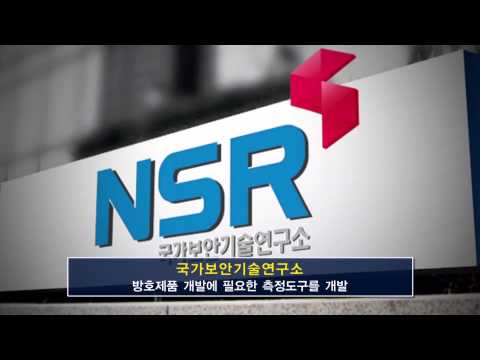기술연구소 영어로
기술연구소의 정의 (Definition of Research Institute)
기술연구소 영어로 is a facility established to conduct scientific research and technical development. Research institutes are organizations dedicated to conducting research and generating new knowledge, products, and services. A Research Institute is responsible for promoting scientific and technical research and fostering innovation within specific fields.
Research Institutes usually have a specific mission or purpose, which can include developing new products or technologies, discovering new knowledge and theories, or providing a resource or service to the public. Institutes are usually specialized in a specific industry, such as technology, healthcare, or engineering.
기술연구소의 기능 (Functions of Research Institute)
기술연구소 영어로 has various functions, and its primary role is to conduct research and development (R&D) activities. These activities can include projects related to science, technology, and engineering. Some of the other functions that Research Institutes perform are:
1. Innovation: Research Institutes are responsible for promoting innovation and developing new technologies and products. The research conducted by these institutes can lead to the discovery of new products, methods, or ideas that can revolutionize entire industries.
2. Knowledge Dissemination: Research Institutes are also tasked with disseminating their knowledge and research findings to the industry, the public, and policymakers. Through scientific publications and conferences, a Research Institute can share their work with others in their field and contribute to the advancement of knowledge worldwide.
3. Intellectual Property Management: As research institutes develop new technologies, products, and innovations, they must protect their intellectual property rights. Research Institutes can acquire patents, trademarks, and copyrights for their inventions or discoveries.
4. Education and Training: Research Institutes often provide educational and training opportunities for their employees, affiliated universities, and the public. Through workshops, training sessions, and seminars, institutes can provide education and training on the latest advancements in their field.
기술연구소의 조직 구조 (Organizational Structure of Research Institute)
Research Institutes can be organized in many different ways, depending on the organization’s purpose and the field of research. Generally, a Research Institute will have a Director, who is responsible for supervising the research activities, administrative operations, and strategic planning of the organization. The Research Institute may have several departments, divisions, or teams, each with its area of specialization, led by scientific leadership, and managed by administrative leadership.
The organizational structure of a research institute can vary depending on the funding source. Publicly funded research institutes have a more complex organizational structure than private institutes, where funding is more assured, and the decision-making process is streamlined. Private research institutes may operate as one business unit, with a single chain of command and a more homogenous workforce.
기술연구소에서의 연구 과정 (Research Process at Research Institute)
The research process in a Research Institute involves many steps, which depend on the organization’s area of expertise. In general, the research process includes the following:
1. Research Planning: This involves defining the research problem, setting objectives, and establishing a plan for conducting the research.
2. Data Collection: Researchers gather relevant data and information by using different methods, such as observing, interviewing, or analyzing existing data.
3. Data Analysis: Researchers use statistical techniques, qualitative analysis, or other methods to analyze the data collected.
4. Interpretation: The findings of the research are interpreted in light of the research objectives.
5. Publication: Research outcomes are often shared in scientific journals, patent registrations, or other public domains.
기술연구소의 성과 평가 방법 (Outcome Evaluation of Research Institute)
The success of Research Institutes can be measured by evaluating their research outcomes. This can be done using various approaches, which include:
1. Peer Review: Research output is evaluated by a group of professionals in the same field.
2. Quality Assessment: The quality of publications, patents, and other measures are measured using established metrics.
3. Impact Assessment: The impact of research output is measured by its effect on the industry, the public, or the environment.
4. Economic Assessment: The cost-benefit analysis of research activities is evaluated to identify the economic benefits of R&D activities.
기술연구소의 출판물 (Publications of Research Institute)
Research Institutes produce many publications, including scientific papers, patent registrations, and other public information. The scientific papers published by the researchers are often peer-reviewed and are an excellent source of information on the institute’s research. Other publications produced by Research Institutes may include:
1. Conference Proceedings: Research Institutes often participate in conferences, and the proceedings of those conferences contain the papers presented by researchers.
2. Technical Reports: Reports produced by Research Institutes that detail specific research findings.
3. Newsletters: Newsletters often provide information on recent research activities and other news about the organization.
4. Annual Reports: Annual reports provide a summary of the Research Institute’s activities and accomplishments over the previous year.
기술연구소와 산업계의 협력 방안 (Collaboration with Industry)
Collaboration between Research Institutes and the industry is crucial for realizing the benefits of R&D. Without such collaboration, the research done in the institutes may not find its application in the industry. Research Institutes can achieve this collaboration by engaging in partnerships or alliances with industry players in the following ways:
1. Licensing Agreements: Research Institutes can license their intellectual property to industry players either exclusively or non-exclusively, depending on the agreement.
2. Joint Ventures: Collaborating with the industry can involve joint ventures, where the Research Institute and the industry player jointly develop a product.
3. Research Agreements: Research Institutes can enter into research agreements with industry players to conduct joint research. During such collaborations, the Research Institute provides its research expertise, while the industry partner provides its resources and expertise and any other funding required.
기술연구소와 국제적인 발전 동향 비교 및 대응 방안 (Comparison of Research Institute’s International Development Trends and Response Strategies)
Research Institutes worldwide are evolving, and Korea’s Research Institutes are particularly dynamic. For instance, Research Institutes in Korea are increasingly engaging in collaboration with the international community. This can be due to the government’s support of international collaboration and the growth of technology worldwide. To keep up with the pace of change, Korean Research Institutes are adopting international strategies by:
1. Extending international networks: Korean Research Institutes are building connections with research institutions, businesses, and policymakers worldwide to share information and exchange knowledge.
2. International training: Research Institutes offer international trainings to their employees to ensure that they can apply the lessons learned in different regions to their work.
3. Participating in international conferences: Sharing research findings and methods with other researchers and scientists from different countries can lead to partnerships, innovative solutions, and higher quality research.
기업부설연구소 영어로(In-house Research Institute in English), Research Institute, 연구소장 영어로(Research Institute Director), R&D, Laboratory, 연구원 영어로(Researchers) are essential to realizing the benefits of R&D. While continuation of research and development may not always show immediate results in the short run, it is still essential in creating innovation that can revolutionize an entire industry and ultimately grow a business or an economy.
사용자가 검색한 키워드: 기술연구소 영어로 기업부설연구소 영어로, Research Institute, 연구소장 영어로, R&D, Laboratory, 연구원 영어로
Categories: Top 23 기술연구소 영어로
1 4 국가보안기술연구소
여기에서 자세히 보기: future-user.com
기업부설연구소 영어로
Importance of 기업부설연구소
In today’s rapidly changing business environment, companies must be able to adapt quickly to new trends and technologies. 기업부설연구소 is one way companies can stay ahead of the game by investing in research and development. While many companies may have their own internal research and development departments, establishing a separate subsidiary or division dedicated solely to research has several advantages.
Firstly, 기업부설연구소 can focus solely on research and development without being distracted by the daily operations of the company. This allows researchers to concentrate on finding new ways to improve products and services, identify emerging trends and technologies, and solve problems that may arise.
Secondly, establishing a separate research subsidiary can help to attract and retain top talent. Researchers in a corporate research institute tend to have more autonomy in their work, allowing them to exercise their creativity and innovation. This can be especially appealing to those who are looking for more challenging and intellectually stimulating work.
Thirdly, corporate research institutes can help to reduce risks by conducting thorough market research and testing new ideas before launching them. Investing in research and development may seem risky in the short term, but it can pay off in the long run by identifying potential problems and improving products and services before they hit the market.
Benefits of 기업부설연구소
1. Innovation
The main benefit of 기업부설연구소 is the ability to innovate and stay ahead of the competition. By investing in research and development, companies can identify new trends and technologies that can help to improve existing products and services or develop new ones. This can help them to gain a competitive edge by offering something new and different from their competitors.
2. Cost savings
Investing in research and development can also help to save costs by identifying ways to reduce waste, streamline processes, and improve efficiency. This can help companies to become more productive and reduce their overall expenses.
3. Revenue growth
By developing new products and services, or improving existing ones, companies can increase their revenue and profits. Offering something new and innovative can attract more customers and help to retain existing ones, leading to long-term growth and sustainability.
Frequently Asked Questions
Q: What kind of companies can establish 기업부설연구소?
A: Any company, regardless of size or industry, can establish a corporate research institute. However, it typically makes more sense for larger companies with more resources to invest in research and development.
Q: How much does it cost to establish a corporate research institute?
A: The cost of establishing a corporate research institute can vary depending on several factors, such as the size of the company, the industry, and the scope of the research. However, it generally involves a significant investment in infrastructure, equipment, and personnel.
Q: What kind of research can be conducted in a corporate research institute?
A: The scope of research conducted in a corporate research institute can vary depending on the company’s goals and objectives. It can include market research, product development and testing, technology research and development, and more.
Q: What are the risks involved in investing in research and development?
A: Investing in research and development can be risky, especially if the research does not lead to any tangible improvements or new products. However, by taking a long-term view and investing resources in the right areas, companies can mitigate these risks and reap rewards in the long run.
Conclusion
기업부설연구소 is an important tool for companies seeking to stay ahead of the competition and innovate. By investing resources in research and development, companies can identify new trends and technologies, reduce costs, and increase revenue and profits. If you are considering establishing a corporate research institute, it is important to weigh the costs and benefits carefully and have clear objectives and goals in mind. With the right strategy and investment, a corporate research institute can be a valuable asset for any company.
Research Institute
South Korea is famous for its fast-growing economy and technological advancements. Along with the advancements in technology, there is also a heightened interest in academic research. This has led to the establishment of various research institutes all over the country. The research institutes in South Korea are actively contributing to the development and growth of the nation. The research conducted in these institutes attracts talents from all over the world and drives innovation in different fields. This article will discuss the Research Institute in Korean and highlight its importance.
What is a Research Institute in Korean?
Research institutes in Korean are independent centers that conduct academic research in various fields, such as science, engineering, medicine, and technology. These institutes have a self-governing structure and are not institutions of higher education like universities or colleges. Instead, they function as places of innovation, where researchers can work on new ideas and projects. They are often funded by the government, private corporations, or a combination of both.
Research institutes in Korean are popular because of the country’s strong government support for research-driven innovation. The government plays a significant role in promoting research and development by providing funding and ensuring that the institutes have access to necessary tools and resources. As a result, Korean research institutes have become internationally recognized for their work in various fields.
Why is a Research Institute in Korean important?
Research institutes in Korea play a crucial role in driving the country’s economic growth. They contribute to the development of new technology, which in turn stimulates various industries. Furthermore, these research institutes are also essential in academic research, education, and training. With the aid of the latest technology, researchers can study and develop new knowledge used in enhancing fields like healthcare, agriculture, and communications.
Another essential role that research institutes in Korean play is providing platforms for the exchange of knowledge and expertise both nationally and globally. Through their work, these institutes help in solving some of the world’s most pressing problems such as climate change and diseases like cancer, which benefit not only the country but the rest of the world.
What are the different types of Research Institutes in Korea?
Research institutes in Korea are often specialized in various fields. Below are some of the different types of research institutes in Korea.
1. Government Institutes
Government institutes are research institutes funded and managed by the South Korean government. These institutes’ main role is to provide policy advice and guidance to various government agencies as the country develops. Examples of such institutes include the Korea Institute of Public Administration (KIPA), which specializes in the administration and management of public policy, and the Korea Institute of Science and Technology (KIST), which focuses on national science and technology policy development.
2. University Institutes
University institutes are research institutes located within universities and academic institutions. Korean universities invest a lot of resources in research, and these institutes play a significant role. They provide an alternative approach to university departments and allow for interdisciplinary research. A good example of such a university institute is the Korea Advanced Institute of Science and Technology (KAIST), which is regarded as one of the top research universities in the world.
3. Industry-Sponsored Research Institutes
Industry-sponsored research institutes are research institutes sponsored and managed by private companies. These institutes operate as independent entities and focus on applied research with the aim of developing new products or finding solutions to specific problems. An example of such an institute is the LG Electronics Institute of Technology, which conducts research in electronics and communication.
FAQs
1. How do I become a researcher in Korean research institutes?
To become a researcher in Korean research institutes, one needs to have a relevant qualification in the field they want to specialize in, typically at a Master’s or Ph.D. level. Researchers are often hired through a competitive process, which involves submitting an application and participating in an interview process. Some research institutes also provide training programs for researchers.
2. How do I find information about Korean research institutes?
To find information about Korean research institutes, one can start by visiting their respective websites. You can also find information through the government websites listing the different types of research institutes in Korea. Still, another option is to attend conferences and events where researchers showcased new findings and network with other members of the research community.
3. Are research institutes in Korea only open to Koreans?
No, research institutes in Korea are open to both local and international scientists. Many research institutes in Korea are actively recruiting international researchers to bring a diverse range of experiences and expertise to the field.
Conclusion
Research institutes in Korea play a pivotal role in driving the country’s economic growth through innovation and discoveries that positively impact people’s lives. They are a vital part of the research ecosystem in South Korea, working alongside universities and industry players. More importantly, they are critical in expanding international cooperation and attracting the best talent from around the world. With this critical role that they play, research institutes in Korea are instrumental in shaping the country’s future competitiveness and economic power.
주제와 관련된 이미지 기술연구소 영어로

기술연구소 영어로 주제와 관련된 이미지 6개를 찾았습니다.


Article link: 기술연구소 영어로.
주제에 대해 자세히 알아보기 기술연구소 영어로.
- 부서명 영문 표기
- 기술 연구소 영어로 – Langs Education
- 정보 기술 연구소 영어로
- “연구소” 영어로 어떻게 말할까요? – Willi.ai
- 영문표기법 – 나이스프린트
- 인쇄 – 명함에 쓰이는 영문 직함
- 부서번호 및 영문명칭
- 연구소 운영규정 – PINT – 퍼블리시뉴스와기술연구소
더보기: future-user.com/wki